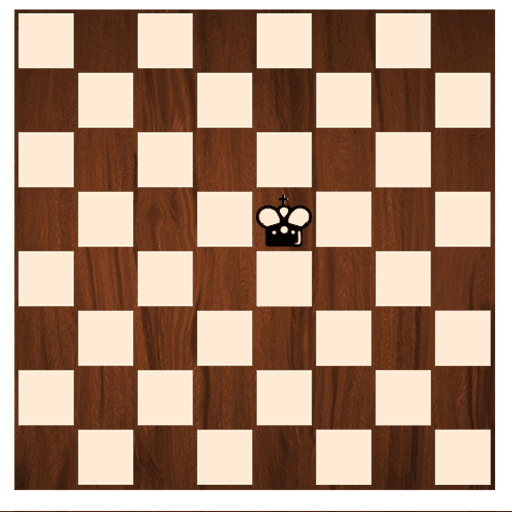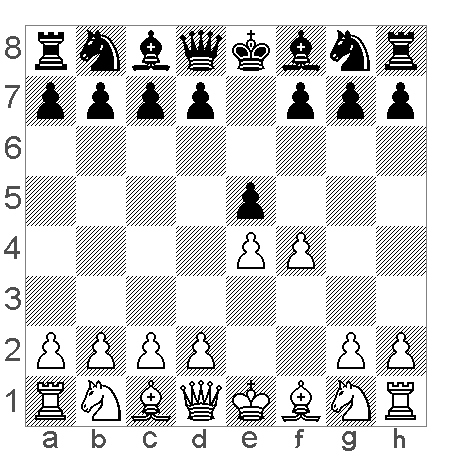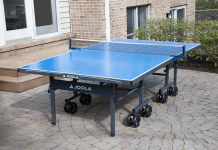No, the king cannot be captured in chess. When a player’s king is in check, they must either move to a space where they are not in check, or they lose their game. However, as the most important piece in chess, the king never leaves the chessboard.
As the most important piece on the board, the king is a piece that you should know like the palm of your hand. In fact, you should know it better than the palm of your hand!
In this article, we’ll discuss all that there is to know about the mightier than thou king. From how this piece moves and captures to the technical question: can you capture the king in chess?
Read on, and get ready to up your king game!
Table of Contents
Checking Out Chess
Have I ever told you how I got into chess?
My dad taught me the game before going to primary school, and I was immediately obsessed! I found every piece fascinating, and loved the idea that no two games were likely to be the same.
Chess has also always been an equal playing field to me. Young can play against old, and physical strength doesn’t matter: it’s all about what’s inside your head.
Fast-forward to primary school, and Dad was driving me to chess tournaments every second weekend. Chess tournaments? I’m not kidding! Imagine over 100 kids from across the city, all playing chess at the same time. It’s no basketball or football game, but I found it pretty exciting.
During one tournament, I vividly remember how there was chess merchandise for sale. I’m serious: imagine pawn-shaped cups, queen-themed key chains, and a poster that says: “Make your move.”
To soften the blow of a lost round, Dad bought me a badge with a king on it that said “I was moved.”
And I was! By the pure magic of chess, and how it brings people together. How boring life would be without the joy that this game brings: all themed around two kings and their kingdoms.
Meet the Aim of the Game
On E1 (for white) and E8 (for black) you’ll find the most important piece on the checkered chessboard: the king. Nice to meet you, your highness!
The object of chess is to place your opponent’s king in checkmate. Checkmate occurs when a king is in check (under threat by an opposing piece) and has no legal way of escaping.
As you can see, the king is the most important piece on the board. Without the king, there would be no game!
A player should, therefore, protect their king at all cost. Every move you make (what is this, a hit Police song?) should either be in an attempt to topple your opponent’s monarchy or to protect your own.
Can the King be Captured?
The king cannot be captured in chess. When starting to play the somewhat complicated game of chess, this might be one of the more confusing rules. I mean, the entire purpose of the game is to capture the king, right?
Right. Except the king is never actually captured.
When a king is in check, the piece must be moved until it is no longer in check. A different piece can also be moved to protect the king from an opposing threat.
When there is no alternative move for the king to make (in other words, you’re done for) the king is in checkmate. Once checkmate occurs, the game has ended and someone (hopefully not you) has lost the game.
Think of it like this: the king is the most important piece in the game. Under no circumstances can the piece handle the humiliation of being captured.
The king must never leave the board
The king not being captured isn’t just a nicety, but a rule.
If you were to, for whichever reason, capture your opponent’s king, you automatically forfeit the game. That’s right, there’s actually a rule against the king being captured, and it’s one you don’t want to break!
What is Check?
“Watch out, your king is in danger!”.
This, in a nutshell, is what it means to be in check. When an opponent threatens your king, they inform you, so that you can attempt to protect your king.
When your king is in check, you may not move any piece that is not related to getting your king to safety.
For example, if a bishop is threatening your king on home soil, you cannot proceed with a knight to the enemy’s ranks.
When there is no alternative move to get your king to safety, you are in checkmate. We will discuss this part of the game below.
What is checkmate?
Have your opponent in checkmate? Congratulations, you’ve won the game! Are you the one in checkmate? Oh, better luck next time.
When a king faces threats from all sides and has nowhere else to go, the piece is in checkmate.
This indicates the end of a game, meaning that someone has won the game and someone else has lost.
Checkmate is common when a king is attacked from all possible sides.
As we’ve said before, the king is the most important piece on the board, and now it’s easy to see why! When using this piece, or any piece for that matter, it is always wise to think of the king and what will keep the piece safe.
How Does the King Move?
Compared to other pieces, the king is not as powerful. It can only move one square at a time, either vertically, horizontally or diagonally.

Think of the king as a wealthy old ruler with a can, slowly walking about his kingdom square by square.
What is castling?
Castling is when, in essence, a king and a rook are swapped to protect the king.
To castle, a player moves their king two squares towards a rook on their home rank. The rook then moves to the square that the king crossed.
This nifty move is only applicable in certain situations. Here are the rules related to castling:
- All the spaces between a king and rook must be empty.
- Neither the king nor the rook may have moved prior to the castling move.
- The king cannot be in check when attempting to castle.
- The square that the king lands on may not be under attack. The squares that the king passes over may also not be under attack.
How Does the King Capture?
The king capture in the same way that it moves; one square at a time in any direction. The king can capture any piece except its opposing king.
Can the King Capture a King?
No, a king is unable to capture another king. According to the rules of chess, this move is illegal.
When your opponent wants to capture your king with theirs, point out their mistake (the fact that they are now in check) and allow them to attempt a different move.
During chess tournaments, the arbiter must be called to make a judgment. Usually, more time is put on the clocks if necessary.
Why can’t the king capture a king?
As the king can only move one space at a time, it cannot approach its opposing king without placing itself in check.
For example, if a white king is on C4 and the black king is on C6, white’s king would have to move to C5 to start its attempt in capturing the opposing king. By doing so, white would place itself in check.
For this reason, two kings may never stand next to each other in chess. This is considered an illegal move.
Can the king attack a queen?
No, the king cannot start an attack on an opposing queen without placing itself in check.
For example, if a black queen is on C4 and white’s king is on E2, the king would have to move to C3 to start its attack on the queen. By doing so, the king places itself in check, and will ultimately lose the game.
The above scenario demonstrates why the king may not place itself in check. This is also an illegal move.
If your opponent places themselves in check by accident, you should politely inform them of the mistake and allow them to re-do the move.
What is the King’s Gambit?
The King’s Gambit requires white to offer a pawn as a sacrifice in order to eliminate black’s central pawn. White is then able to develop rapidly and attack the opposition’s king.

Dating back to the Romantic Era, this set of moves is one of the oldest chess openings still used today.
This is a handy opening to know, not just if you are playing the white side, but also if you are white’s opposition and you need to counter the move.
What Does Turning Your King On Its Side Mean?
When a player wants to surrender in chess, they turn their king on its side.
This is a universal way to symbolize that you do not see how you could win the game, thus you forfeit and your opponent wins the game.
Although forfeiting a game is not advisable for amateurs, as the game can always turn in your favor, surrendering is considered polite between masters of the game. This move indicates that you respect your opponent and their skills, and you do not want to waste their time.
What is the King Worth?
The entire game.
Let me explain: as you likely know, each chess piece on the board has a value. We’ll get to the other values in a second, but let’s start with the king.
The king is the only piece in chess that doesn’t have a point value, as it is the most important piece on the board. The king is the very reason that the game is played.
If a king is placed in checkmate, the game is automatically over.
Other pieces and their value
A pawn is worth one point, while a knight and bishop are worth three points. A powerful rook is worth five points, and the mighty queen is worth a whopping nine points.
These points are used to indicate a piece’s strength. Although strength is not always an indication of power, just look at the important king!
Know Chess Etiquette
When playing a game of chess, there are a few general unspoken rules to follow. These include polite gestures and make for a nice game.
- Politely inform your opponent if they have made a move that is illegal. Call the arbiter if you are playing a professional game.
- No trash talk! It is considered rude to intimidate your opponent.
- Do not talk during the game. This is, of course, different when playing an informal game. Always read the room.
- Shake hands after a game, whether you won or lost. Never be a bad loser.
- Although it is not necessary to say “check” to your opponent, it is considered a polite way of informing your opponent that their king is in trouble.
- White always begins first but black has the choice of equipment.
- If a player is late to a formal game, the other player may start the clock. If black is late, white also has the choice of equipment.
- When suggesting a draw, say “I offer a draw” and hit your clock. Do not put out your hand to shake your opponent’s hand unless they accept your offer.
- Do not argue with your opponent. If you cannot agree, call the arbiter.
Wrapping up
A king can never be captured. When a king is in checkmate, this indicates the end of the game. Despite this, an opponent never physically captures the king. The game simply ends, and the king never leaves the board.
In this article, we discussed other interesting facts about the king, such as the ways in which it moves, attacks and captures opponents.
Remember, although a king does not have many moves to its availability, it remains the most important piece on the board and should be protected at all cost.

Veronica is a Green Bay-based freelance writer and editor with extensive experience with board games. When not busy scribbling her thoughts, you might find her in her garden, hiking out in the woods, or exploring new food joints.
Veronica is a die-hard board game and chess hobbyist by night. She likes to try out new games and is always on the lookout to recruit new players for her game night (so beware!). When not playing board games or throwing darts, she is usually busy painting miniatures (or doing other nerdy stuff).
She is the CEO & Content Writer of Indoor Games Zone. She shares her expertise from years of playing chess, board games, and darts.

![Stiga XTR Pro Review | 1,559+ Global Ratings (In-Depth Guide) [year] Stiga XTR Pro Review](https://indoorgameszone.com/wp-content/uploads/2021/08/Stiga-XTR-Pro-Review-218x150.jpg)






